Live Science Verdict
The Yosuda Indoor Stationary Cycling Bike is a durable and sturdy home-gym staple that is more than capable of seeing anyone through a sweaty spin session, but you’ll be hard-pressed to find any flashy features.
Pros
- +
Sturdy and smooth ride
- +
Very comfortable seat
- +
Affordable
- +
Has device holder
Cons
- -
Basic metric tracking
- -
No full-screen console
Why you can trust Live Science
All hail the Yosuda Indoor Stationary Cycling Bike. While you won’t be blissfully transported to the Tour De France or blown away by unrivaled technology when riding this bike, you will save cash and catch a sweat. This sturdy pocket rocket of a bike is a secure and reliable ride, with a small footprint to boot, and you don’t need a loan to foot the bill either.
Dimensions: 40” / 22”/ 45”
Weight: 73 lbs
Flywheel: 35 lbs
Max user weight: 270 lbs
Display: Basic LCD
Drive type: Belt
Resistance: Friction
Warranty: 1-year parts
Workouts: None
Other features: Drinks holder, toe cage, smartphone holder
We were elated with just how comfortable this bike was to ride with its ergonomic seat and upright handlebars. It’s modest and mighty, leaving us safe in the knowledge that you don’t need to over-invest to find quality. What’s more, at under $300, you can scoop it up at a fraction of the cost of swankier models like the NordicTrack S22i or Peloton.
Finally, a balance has been struck between affordability and numb bum potential, and it’s up there for us as one of the best exercise bikes and best workout equipment for home workouts, on a budget. It isn’t a high-tech ride like the Peloton or Echelon Connect EX3, but this bike can be your dependable solid best friend and provides some basic metric tracking via a small LCD display. We recommend having Youtube, or an app like iFit, on hand to program some killer workouts, and you can track your metrics using some of the best fitness trackers around.
Set up and usability
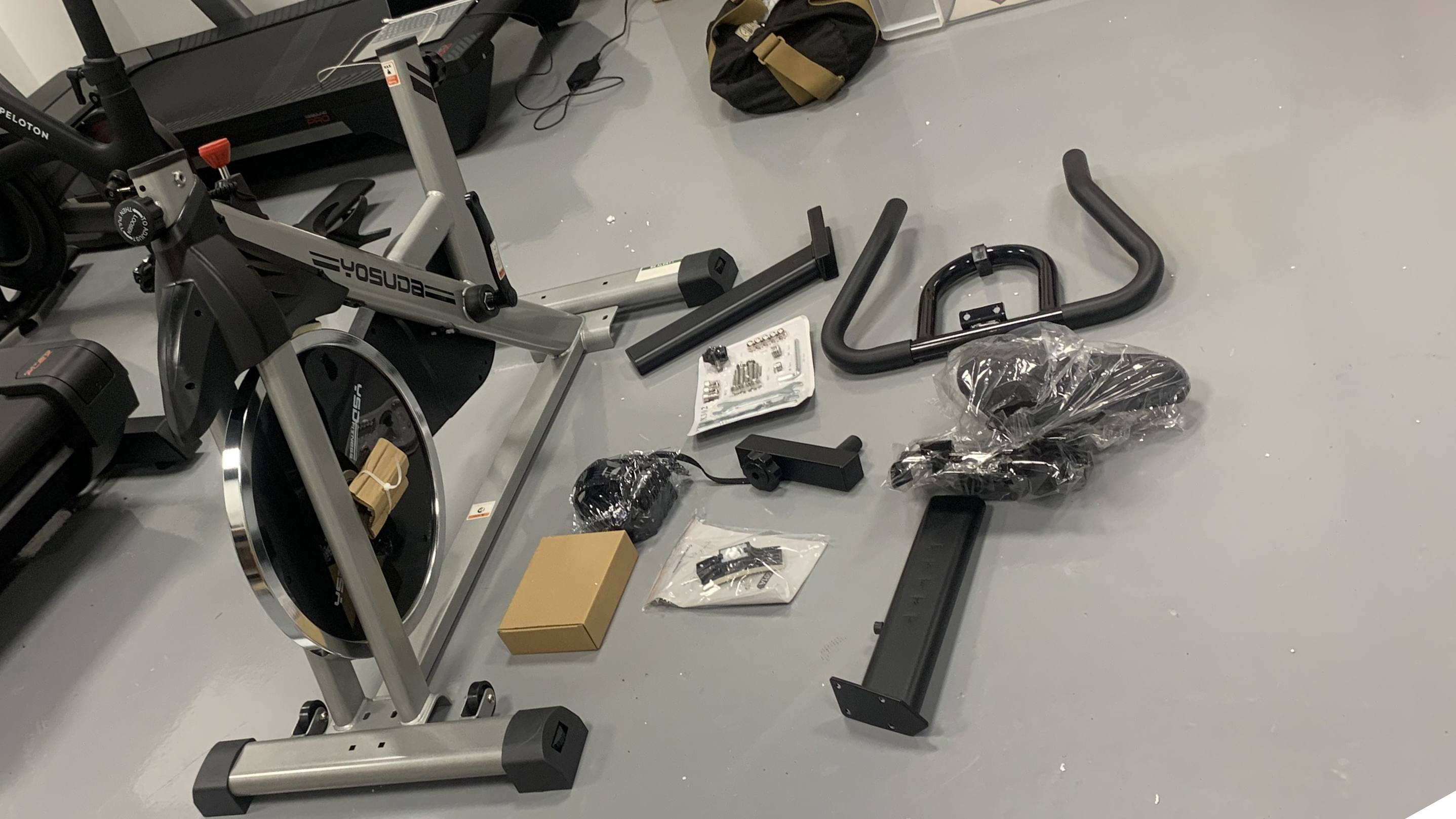
- Set up and usability score: 4.0/5
Even if your best attempts at construction are usually futile, we reckon you can get by setting this bike up without a helping hand. Your delivery arrives with the mainframe assembled and all parts slot and screw together using nuts, bolts, and an allen key – so there’s no temptation to launch rogue pieces of the bike at the walls in a rage. We took an hour to assemble this model, and a further five minutes to tighten up the bolts, ensuring nothing wobbled.
The instruction manual did leave us puzzled, but there’s a handy QR code on the front page that takes you to a cohesive how-to YouTube video. Once assembled, there’s nothing left to do but hop on and take it for a spin.
Design and display
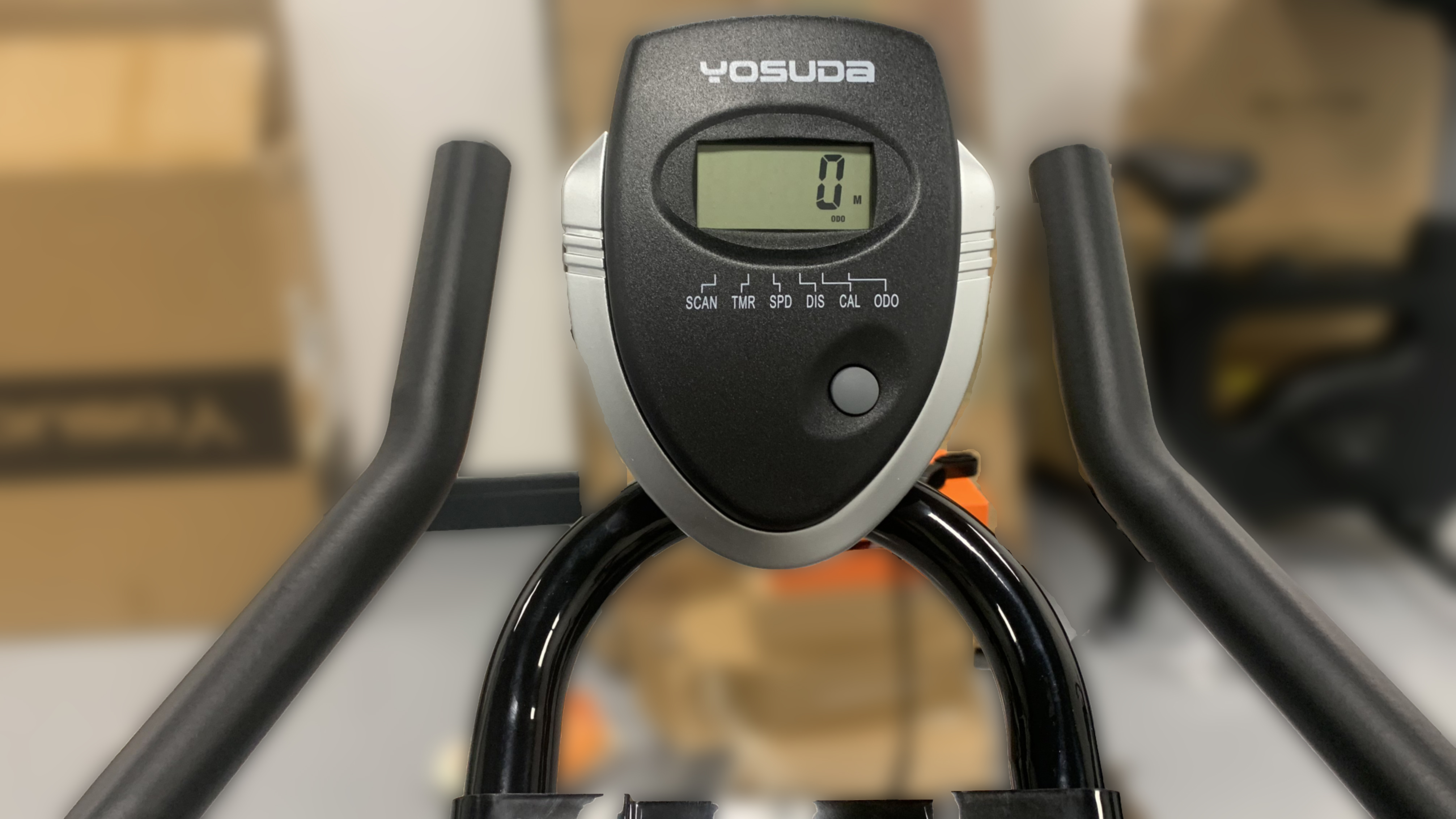
- Design and display score: 3.5/5
There’s no doubt that the Yosuda exercise bike is basic and compact. Despite this, the design doesn’t look or feel cheap, and consists of a heavy stable steel frame and 35 lbs friction resistance flywheel that softly and quietly powers movement.
To be honest, we were stunned by just how quiet this model is. The flywheel uses friction from a felt wool brake pad on top of the flywheel, and an adjustable knob on the bike frame, to generate resistance. While you might think this would result in a noisy pedaling experience, you could hear a pin drop in reality. There’s even a spare brake pad to sweeten the deal.
The wide base adds stability, so there’s no tipping while pedaling, and the front-loaded wheels allow you to quickly store this bike away – which is extremely easy considering it weighs all of 73 lbs. However, it can’t be folded, so you’ll need to disassemble it if you’re tight on space. The Xterra Fitness FB150 is a great place to start for foldable designs, but considering how similar they are in price, we reckon this is way better value for money.
The handlebars are angled to an upright position which felt far more comfortable for us during testing, and it means you’re not forced to keep your forearms flat. The most surprising design feature is the ergonomic seat which is a huge tick for us; it’s fitted with springs underneath to add cushioning and creates a soft bounce during exercise, without feeling unstable. The seat is far more padded than high-spec models like the Peloton or Wattbike Atom, which are fitted with rock-solid seats that can leave beginners wincing and hobbling the next day. This is a big bonus for Yosuda, and after an hour on the bike, we could have happily ridden on.
The handlebars can be adjusted vertically and the seat both horizontally and vertically. There’s a fair amount of range available, but how comfortable this bike feels will definitely depend upon your inseam. Our user is 5”2 and positioned the seat to the lowest setting, so there should be enough room for a 6”0 user.
If you’re in the market for a sophisticated console, you might consider going down the NordicTrack or Peloton route instead. This bike is fitted with a compact LCD display (batteries included) showing visuals for metrics like calories, distance, time, speed – and a scan mode that flits between them all. A handy odometer also tells you the overall accumulated distance, but you are missing a key feature – cadence (more on this below).
The bike is fitted with aluminum alloy cage pedals with straps to adjust and tighten to your foot shape. We wore Adidas U_Path X trainers when testing, which are wide and thick, and we found the toe basket fitted well and felt secure, without any slippage throughout the pulling-pushing motion of cycling.
Features
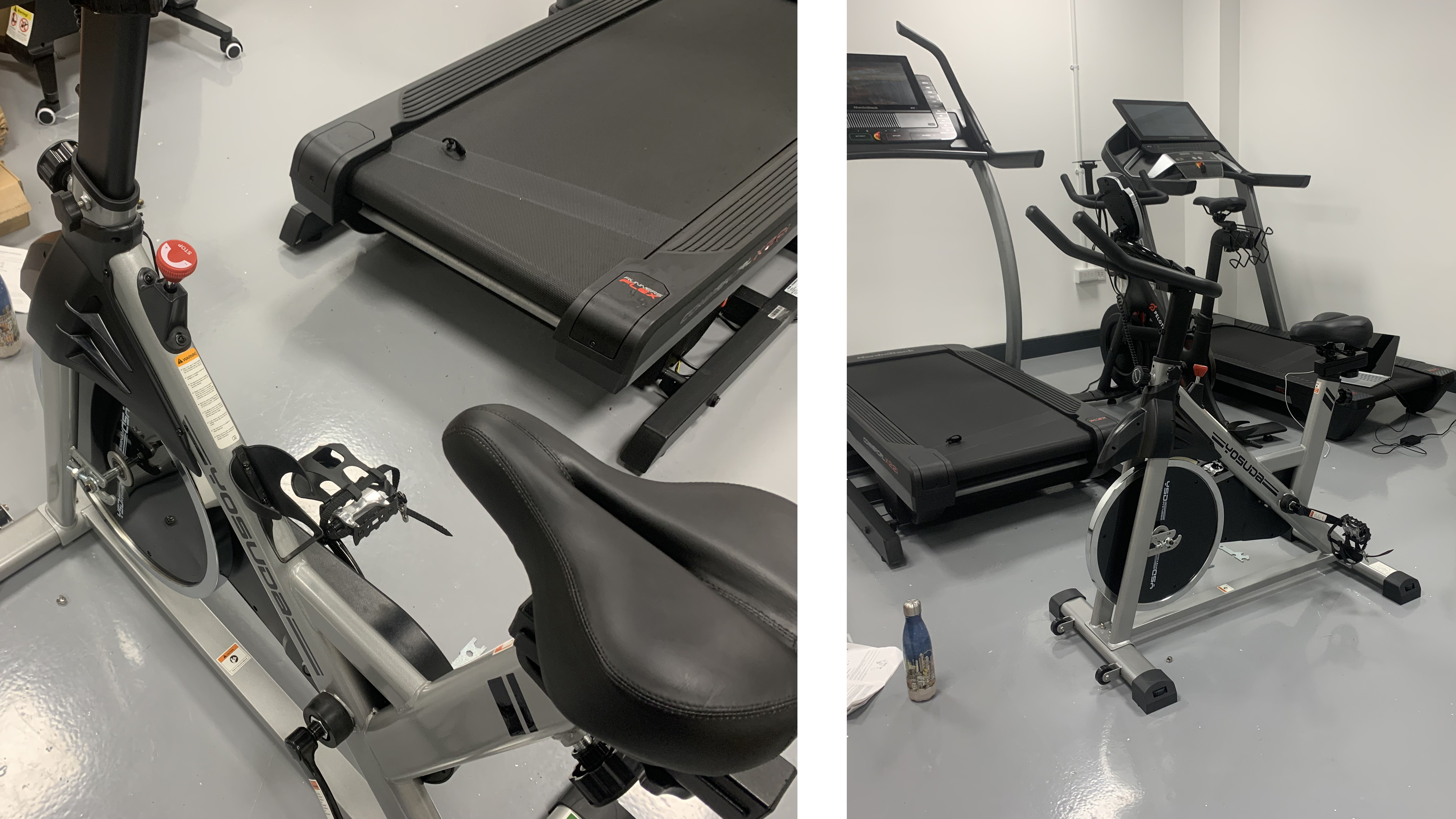
- Features score: 3.0/5
There’s no Bluetooth capability, so you’ll need to be prepared to get creative with your own workouts. This is easy enough to do via the iFit app, which offers live and preset workouts, or you can use free videos via YouTube.
The bike is fitted with a phone holder between the handlebars that can hold a smartphone or small tablet and is perfect if you’ve chosen to stream a workout; it just about supported our iPhone X through the more vigorous hill sprints, although there were a few wobbles. There’s a secure drinks holder fitted to the mainframe, but this would have been more convenient up near the handlebars.
Aside from basic metrics, it’s over to you to find a fitness tracker to suit your needs. Frustratingly, this bike doesn’t track cadence, making it harder to follow your instructor on workouts and gauge your rate of perceived exertion (RPE). This is fine if you’re a beginner or just focused on the very basics, but it’s not great news for keen cyclists. Cadence tracks pedal revolutions and can help you determine your pace, so this could be a great loss for those who enjoy tracking this way.
Performance
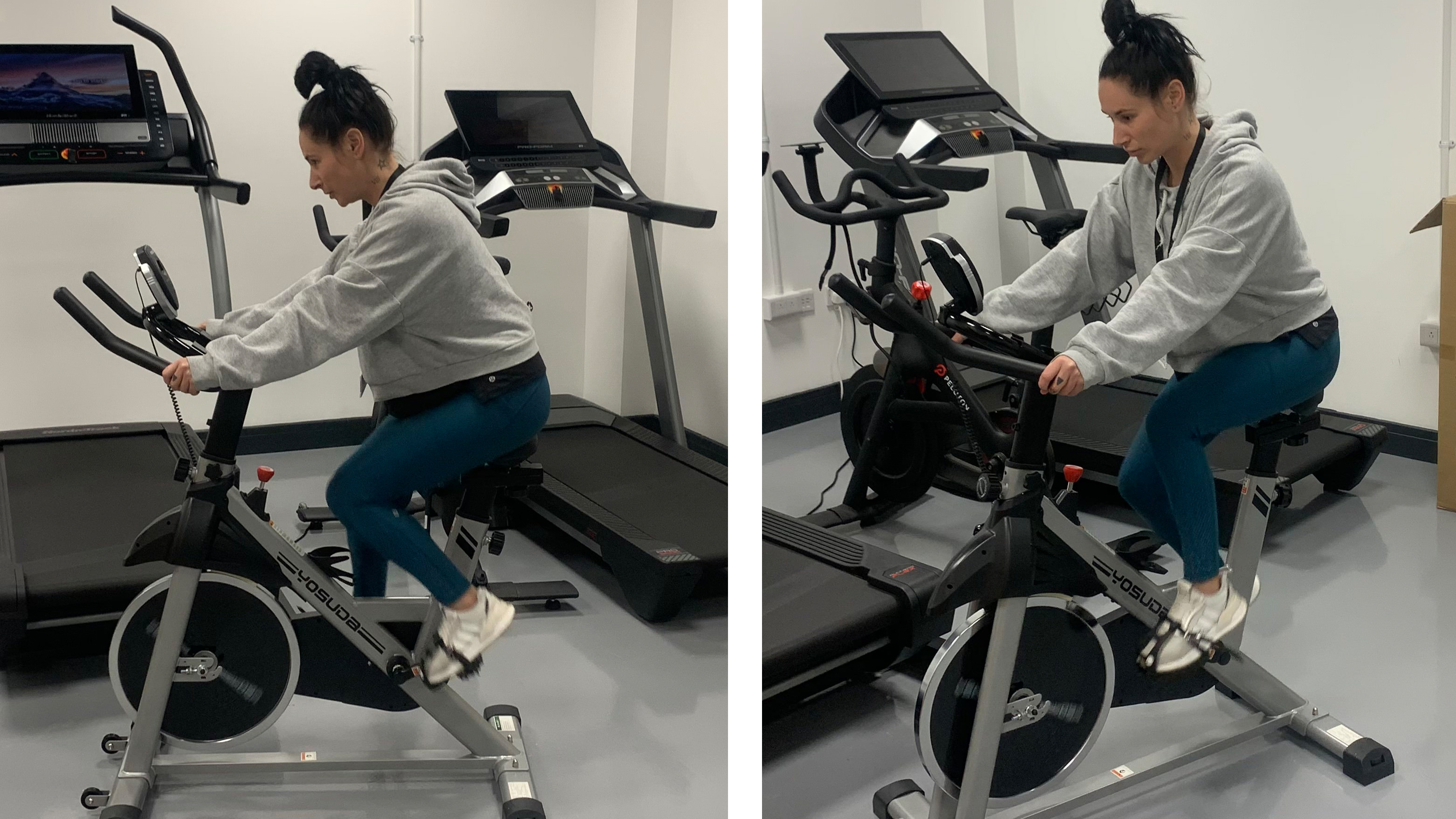
- Performance score: 4.0/5
It really is up to you how you use this bike; if you want to flick on Netflix and cover some distance at low effort, this bike is perfect. Equally, if you prefer ramping it up, the Yosuda doesn’t crumble under pressure – although we can only speak for the testing period we had.
You can still achieve a spinning experience, regardless of the lack of features. We tested using a 60-minute endurance cycle class, a 30-minute HIIT fat-burning workout, and a recovery cycle – all via YouTube – and the bike held its own. We came away with the familiar shaky leg feeling and sweating like mad, which is a testament to the effective resistance capabilities available if you choose to crank it up. You can definitely still achieve a decent workout if you’re happy to take the reins and get creative.
The ride is smooth and solid with no clunking found in other models using a chain. The flywheel barely even sighs, with a gentle clicking sound the only thing to be heard amongst our heavy panting. While you can’t track your cadence, you can still use your personal RPE to create training levels throughout the workout or measure via other metrics.
However, keen cyclists or anyone seeking excitement should know this is a no-frills experience. You’re not transported to the Alps, immersed in live boot camp, or pushed to your limits by an instructor. It is a basic bike for basic cycling needs – and this is why you’re saving money.
- Related: Best heart rate monitor apps
Value for money
- Value for money score: 4.5/5
This is a brilliant value for money find. It’s exhausting to source an indoor bike that doesn’t feel like it might collapse at any moment during precarious sprints and climbs. Yosuda has designed this stationary bike with durability in mind, and we’re here for it. The only reason we didn’t give this bike a five is because of the distinct lack of features and the missing cadence tracker, which could turn off avid cyclists.
Verdict
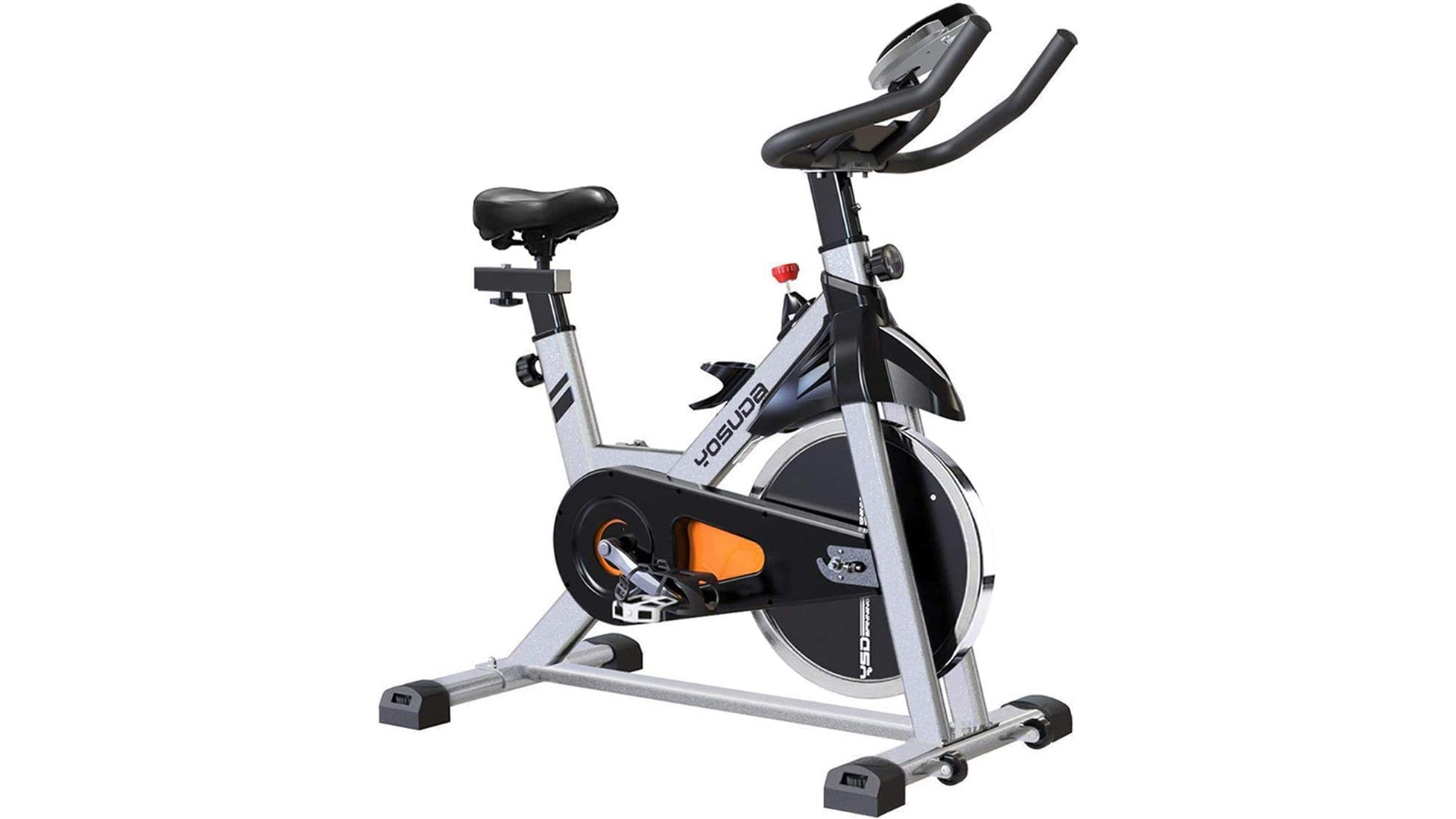
Beginners, or those unfussed about features, will find this a great place to start. We were impressed with the quality design, easy assembly, and smooth ride offered by Yosuda. We’re also still in awe over just how comfortable that seat is.
Alternatives
If you’re after an immersive cycling experience, the Echelon Connect EX3 is a cheaper alternative to Peloton and offers live and on-demand classes via its app without the unnerving footprint or price tag.
Keen cyclists listen up – the Wattbike Atom is designed with cyclists at the forefront. Anyone seeking to improve their cycling technique while achieving an intense workout will benefit from all this bike can offer.
How we tested
We subjected this bike to a rigorous review process at our purpose-built testing center, working through the gears to make sure it was able to deliver a lung-busting workout.
Our testing team completed a range of workouts, including an active recovery session, an intense interval workout, and a longer endurance piece, before scoring each exercise bike on five factors:
- Set up and usability
- Design and display
- Features
- Performance
- Value for money
Results were used to calculate a final score out of five and inform a detailed verdict designed to summarize each exercise bike’s strengths and weaknesses, helping you pick the best product for you.
This bike is our budget-friendly option. Its MSRP is $299/ £240, but you can find cheaper deals on Amazon. Although it's a basic bike, the quality of the design makes it well worth the purchase.

Sam Hopes is a level III fitness trainer, level II reiki practitioner, and resident fitness writer at Future PLC. Having trained to work with both the mind and body, Sam is a big advocate of using mindfulness techniques in sport and aims to bring mental wellbeing to the forefront of fitness. She’s also passionate about the fundamentals of training and how we can build more sustainable training methods. You’ll find her writing about the importance of habit-building, nutrition, sleep, recovery, and workouts.











